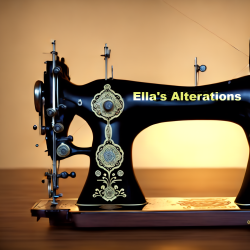Tailoring Basics
Tailoring is an art form that has stood the test of time, maintaining its essential place in the world of fashion and clothing. Whether it’s altering a garment to fit perfectly or creating a piece from scratch, tailoring encompasses various techniques and skills that result in a finished product that fits and flatters the body. Here, we’ll explore the basics of tailoring, focusing on some key aspects that every aspiring tailor or fashion enthusiast should know.
1. Measuring Accurately
One of the cornerstones of tailoring is precise measurement. It’s essential to measure the body accurately to ensure the garment fits perfectly. Key areas to measure include the chest, waist, hips, arms, and legs. Using a flexible measuring tape and having a clear understanding of where and how to measure is crucial.
2. Understanding Fabrics
Different fabrics behave in different ways. Some are stretchy and forgiving, while others are stiff and rigid. A good tailor understands how fabrics behave and how to work with them. The choice of fabric is crucial, especially when it comes to how it drapes, its appearance, durability, and how it reacts to sewing and pressing.
3. Pattern Making and Cutting
Pattern making is the art of translating measurements into a paper template, which is then used to cut the fabric. Proper pattern making ensures that the garment’s pieces fit together seamlessly. Cutting the fabric requires a steady hand and sharp scissors or a rotary cutter. Cutting accurately according to the pattern is vital in tailoring, as even small mistakes can lead to a poor fit.
4. Sewing Techniques
Sewing is at the heart of tailoring. Various stitches and techniques are used to join fabric pieces, including straight stitch, zig-zag stitch, overcasting, and more. Mastery of sewing by hand and with a sewing machine is necessary for creating professional-looking garments. Understanding how to control tension, seam allowances, and how to properly finish edges are also key aspects.
5. Pressing and Finishing
Pressing is often overlooked but is an essential step in tailoring. Proper pressing sets seams, shapes the fabric, and gives a finished appearance to the garment. Using the right temperature and techniques ensures that the fabric looks crisp without being damaged.
Finishing techniques such as hemming, adding buttons, zippers, or other closures, and fine-tuning the fit all contribute to a polished final product. Attention to detail in these final stages elevates the garment and reflects the skill of the tailor.
6. Building a Basic Toolkit
Every tailor needs a set of tools to work effectively. Essential tools include measuring tapes, scissors, pins, needles, thread, a sewing machine, an iron, and more. Investing in quality tools will make the tailoring process smoother and more enjoyable.
Conclusion
Tailoring is a multifaceted skill that requires attention to detail, an understanding of fabrics, mastery of sewing techniques, and a passion for creating beautiful garments. Whether you’re altering a favorite piece of clothing or designing a new garment, these tailoring basics will serve as a foundation for your work.
Learning tailoring is not only a valuable skill but also a creative outlet that allows you to express individuality through clothing. With patience, practice, and a dedication to the craft, you can take the first steps into the world of tailoring, where every stitch is a step towards fashion’s timeless elegance. Whether you’re a professional looking to hone your skills or a beginner eager to dive into the world of fashion, these fundamentals are your gateway to the beautiful art of tailoring.
Understanding Fabric Types and Their Care
